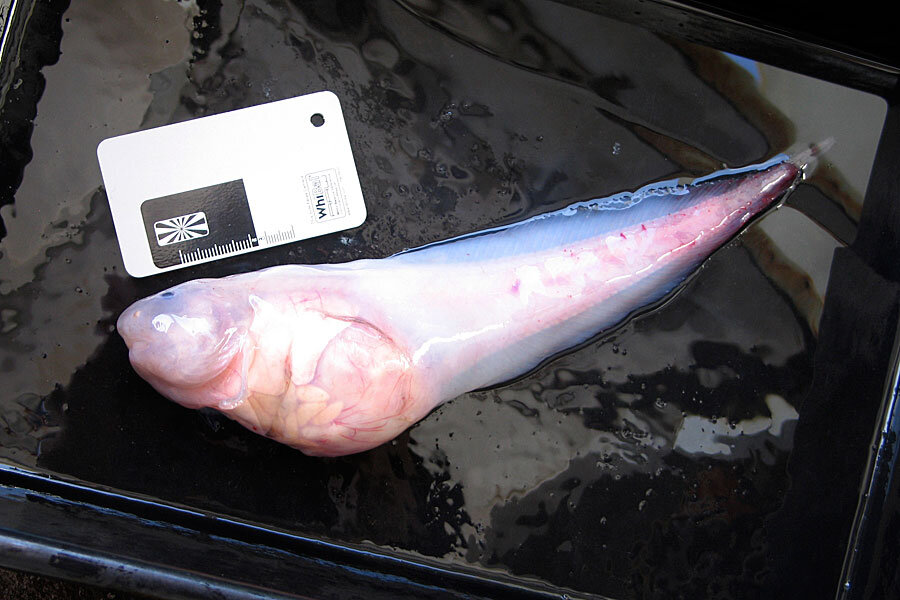Why the world's deepest diver is also pretty stinky
Loading...
| Wellington, New Zealand
They may look like guts stuffed in cellophane, but five fish hauled up from near-record depths off the coast of New Zealand are providing scientists with new insights into how deep fish can survive.
In a paper published this week in the Proceedings of the National Academy of Sciences, scientists from the U.S., Britain and New Zealand describe catching translucent hadal snailfish at a depth of 7 kilometers (4.3 miles). At that depth, the fish would experience more than 10,000 pounds of pressure per square inch.
By measuring levels of a compound in the fish that helps offset the effects of pressure, the scientists say they've concluded that fish likely can't survive below about 8,200 meters (5.1 miles). That would mean no fish at all live in the deepest one-quarter of the world's oceans.
The snailfish have little pigmentation due to the lack of light in their environment, hence their translucent appearance.
New Zealand marine ecologist Ashley Rowden, a co-author of the paper, said nobody had caught a snailfish in nearly 60 years and so he wasn't overly hopeful when they sent down a box-like trap into the Kermadec Trench near New Zealand in late 2011.
He said they used mackerel as bait to attract the small sandhopper-like creatures the snailfish feed upon.
"When it came up, it was just amazing to see. It was 'Oh my God, we've got the fish, and we've got more than one,'" Rowden said.
Rowden said he put on gloves and carefully picked up one of the fish.
"It was like a water-filled condom," he said. "A sloppy, gelatinous mass that moves between your hands. It was very cool, and very strange to see its organs and everything."
Rowden, who works at New Zealand's National Institute of Water and Atmospheric Research, said scientists had previously speculated fish couldn't live below certain depths but that catching the fish and studying them helped provide more scientific certainty.
The fish are the second-deepest recorded catch. In 1970, a boat off the coast of Chile reported catching a cusk eel at a depth of 8,370 meters in a trawl net, although questions remain whether that fish was caught at the ocean floor or higher up as the net was hauled in.
The paper's lead author, Paul Yancey of Whitman College in Washington state, said they were able to measure the levels in the fish of trimethylamine oxide, a molecule that protects proteins from pressure. He said there appears to be a natural limit to the amount of the molecule a fish can contain.
Yancey said the molecule is already being studied for its human applications, including in the treatment of glaucoma.
Meanwhile, he said, if the hadal snailfish look strange enough, they would smell terrible when they decompose. That, he said, is because the molecule has another property — it gives fish their distinctive smell, so the deeper they live, the stronger they stink.
Yancey is keeping his snailfish on ice.
Copyright 2014 The Associated Press. All rights reserved. This material may not be published, broadcast, rewritten or redistributed.





